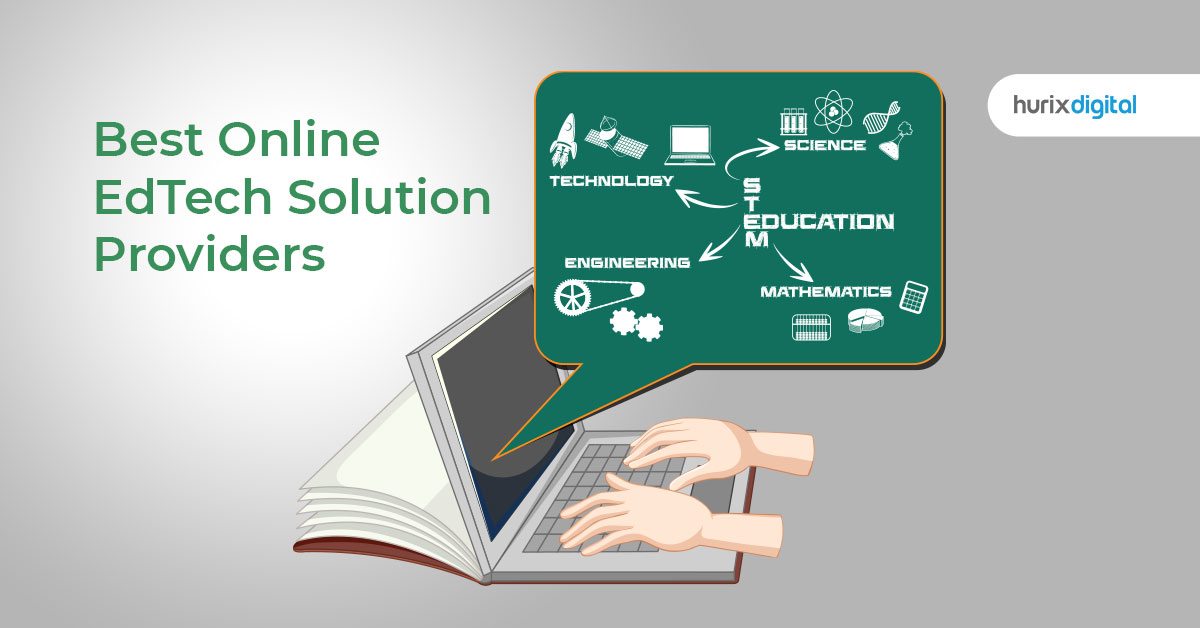
How Universities Can Maximize ROI with Limited Budgets?
Summary
This blog discusses strategies for universities to maximize ROI with limited budgets through strategic planning, data-driven decisions, innovative resource allocation, operational efficiency, and enhancing student and faculty success.
Like many other businesses, universities must navigate a challenging environment of declining finances and growing expenses. Although the fundamental goal of education has not changed, there has never been a more urgent need to maximize ROI in universities and attain optimum results.
Even with limited funding, universities can maximize ROI in universities by implementing the cost-effective solutions we will discuss in this article. Universities may guarantee their sustained success and relevance in a constantly changing educational landscape by concentrating on strategic planning, data-driven decision-making, and creative approaches to resource allocation.
Table of Contents:
- The ROI Imperative: Why it Matters for Higher Education
- Strategies to Maximize ROI in Universities with Tight Budgets
- The Bottom Line
The ROI Imperative: Why it Matters for Higher Education
School administration choices significantly impact both the institutional trajectory and student outcomes. Every decision requires considerable thought, from choosing academic resources to allocating funds. Given this, the idea of return on investment, or ROI, becomes a crucial instrument for optimizing the effects of educational spending. ROI is relevant in education despite its traditional association with the commercial sector. By assessing the effectiveness of investments in educational materials, schools can calculate the return on their investment.
It involves assessing whether the proceeds from investments in textbooks, technology, or professional development programs justify the initial costs. However, implementing an ROI strategy presents unique challenges for schools. The current processes often lack the necessary data and analytical tools to evaluate the effectiveness of resource allocation accurately. By adopting a systematic approach to improving university ROI, they gain a deeper understanding of their investments and make informed decisions that align with their strategic goals.
Also Read: How to Develop and Deliver Interactive Lessons for Higher Education
Strategies to Maximize ROI in Universities with Tight Budgets
Let us explore specific strategies universities can employ to optimize their ROI while significantly enhancing their operational efficiency and student outcomes.
1. Strategic Planning
Strategic management is a strong foundation on which organizational leaders build a viable strategic plan for increasing ROI. In doing so, institutions can establish guidelines for achieving their goals and objectives corresponding to resource availability. Through critical analysis of the institution’s focus, goals, and strengths, universities understand where investment will be most profitable.
- Prioritization: Prioritizing initiatives is a critical component of meticulous planning. Institutions can optimize resource utilization by focusing on high-impact projects that directly contribute to their strategic objectives.
- Performance Metrics: In the context of performance measurement, clarity of performance measures assists universities in tracking the efficacy of their investments. Tracking key performance indicators (KPIs), such as student retention rates, graduation rates, and job placement rates, allows institutions to assess the impact of their spending decisions.
- Continuous Evaluation: Continually reviewing strategies keeps them relevant and applicable to current situations. In this way, the plan flexibility allows universities to meet ongoing challenges that jeopardize their further development and grasp emerging opportunities.
2. Data-Driven Decision Making
Decision-making is enhanced when universities can make pragmatic decisions backed by statistics and data collected. Incorporating data analytics and analyzing patterns allows institutions to gain insights into their operations and deficiencies and detect improvement opportunities.
- Data Collection and Analysis: Implement a robust data collection and analysis system. This system would aggregate data regarding student enrollment, financial performance, faculty productivity, and other relevant metrics.
- Predictive Analytics: Predictive analytics enables a university to foresee the future and prepare to address any anticipated probabilities. This way, it can tackle probable risk factors and seize expansion opportunities early on.
- Data-Informed Budgeting: Data-driven budget management in higher education allows universities to allocate funds to programs and initiatives with the greatest potential for ROI. This evidence-based budget decision ensures that resources are being used effectively.
3. Innovative Resource Allocation
Universities must adopt sustainable resource allocation methods to overcome challenges to traditional practices and explore alternative funding and partnership opportunities. Applying marginal improvements to resource utilization helps eliminate inefficiencies and enhance the institution’s overall financial position.
- Public-Private Partnerships: Collaborating with private sector organizations can provide universities with access to additional funding, expertise, and resources.
- Philanthropy and Fundraising: University solicitations are generally successful if adequately developed and capable of raising considerable funds. State and non-state institutions can enlist the help of alumni, foundations, and individual contributors to support their endeavors.
- Diversification of Revenue Streams: To diversify their income possibilities, universities can try to develop the sales of such services as online education, executive programs, and licenses to their intellectual properties.
Also Read: Future-Proofing Higher Ed: Scalable IT Infrastructure Solutions
4. Operational Efficiency and Cost Reduction
Universities must focus on operational effectiveness and cost reduction to achieve a good return on investment. Strategic measures and plans can be implemented to help institutions become financially viable when resource allocation issues, such as redundancy or misallocation, arise.
- Consolidation of Services: Merging or consolidating departments could significantly reduce administrative overhead. Consolidating redundant functions reduces the workflow workload and saves manpower costs while improving decision-making. Merging marketing and communications departments may lead to an increase in efficiency and reduced costs.
- Energy Efficiency: Energy-saving measures can result in significant cost savings. Smart thermostats can also maximize heating and cooling systems and reduce energy costs. Energy efficiency in building design and insulation will also help save costs in the long run.
- Technology Optimization: Leveraging technology can automate most processes while reducing paperwork and boosting efficiency. Student Information Systems (SIS) and Learning Management Systems (LMS) can ease administrator tasks while enhancing communication and general student experience. Cloud-based solutions also offer reduced IT infrastructure costs alongside enhanced accessibility.
- Centralized Procurement: Centralized purchasing can also save universities a lot of money. With the purchasing power centralized, universities can easily negotiate better deals with suppliers and reduce procurement costs. Central procurement helps standardize purchasing processes, improve inventory management, and minimize waste.
- Supply Chain Management: When the procurement process is concise, inventory management improves, lead times are addressed, and a university can slash its expenses while assuring timely delivery of supplies and services. Effective supply chain management entails system development that factors in cost reduction plans, assists in monitoring stocks, and enhances supplier relations.
5. Enhancing Student Success and Faculty Excellence
Academic achievements are intertwined with the successes of students and members of faculties. For a campus to be lively and functional, there must be a focus on programs that propel students toward success and assist faculty to excel in their responsibilities.
- Targeted Academic Support: It is equally vital to determine students with subpar learning standards. These students require support services like tutoring, academic coaching, and supplemental instruction to overcome their performance challenges.
- Career Services: A well-resourced and well-staffed student career services department is crucial to student employment success. Career development services, such as career counseling, employment, and internships, can help students achieve their professional aspirations.
- Flexible Learning Options: Given student diversity, there must be value in learning paradigms, including web-based and blended learning programs. These options can work for students with other chores, learners with jobs, families, or other commitments that would make it difficult for them to attend traditional classes.
- Professional Development: Investment in faculty development through effective instruction improvement programs is crucial to increasing the teaching faculty’s instructional effectiveness and optimizing student learning. Universities should offer faculty development opportunities through workshops and conferences to assist faculty in learning about prevailing teaching methodologies and technologies.
- Intellectual Property Commercialization: Licensing university-owned intellectual property can generate revenue to reinvest in research, education, and other university initiatives. This implies that IP rights, protection, and commercialization can prompt economic growth and societal contribution.
Also Read: The Best Interactive Learning Strategies for University Success
The Bottom Line
Due to increasing costs and shrinking funding, universities must achieve maximum efficiency and become strategic in their expenditures and programs. To maximize ROI in universities with minimum budgets, institutions must adopt a multifaceted approach that relies on data and innovative solutions to support universities in reorganizing operations, improving student experiences, and ensuring their future stability.
With such strategies and the assistance of Hurix Digital experts, universities can reach the maximum level of stimulus control, create conditions for sustainable development, and emerge as resilient institutions. Based on knowledge and understanding of the higher education sector, Hurix Digital provides a full spectrum of services and products, ranging from shaping digital strategies to offering advanced data-driven insights.
Our advisory services facilitate the achievement of institutional goals and enable them to address various challenges, optimize operations, and deliver efficient digital experiences. Discuss your own needs with our professional guidance experts.

Senior Vice President
A Business Development professional with >20 years of experience with strong capability to sell new solutions and develop new markets from scratch. New Market Entry Specialist with experience of working in two of the largest emerging markets – China & India. Also covered other key markets in APAC, US, EU & ME. Exceptional experience of conceptualizing, ideating and selling new learning technologies like VR AR, etc. across multiple industry verticals.







